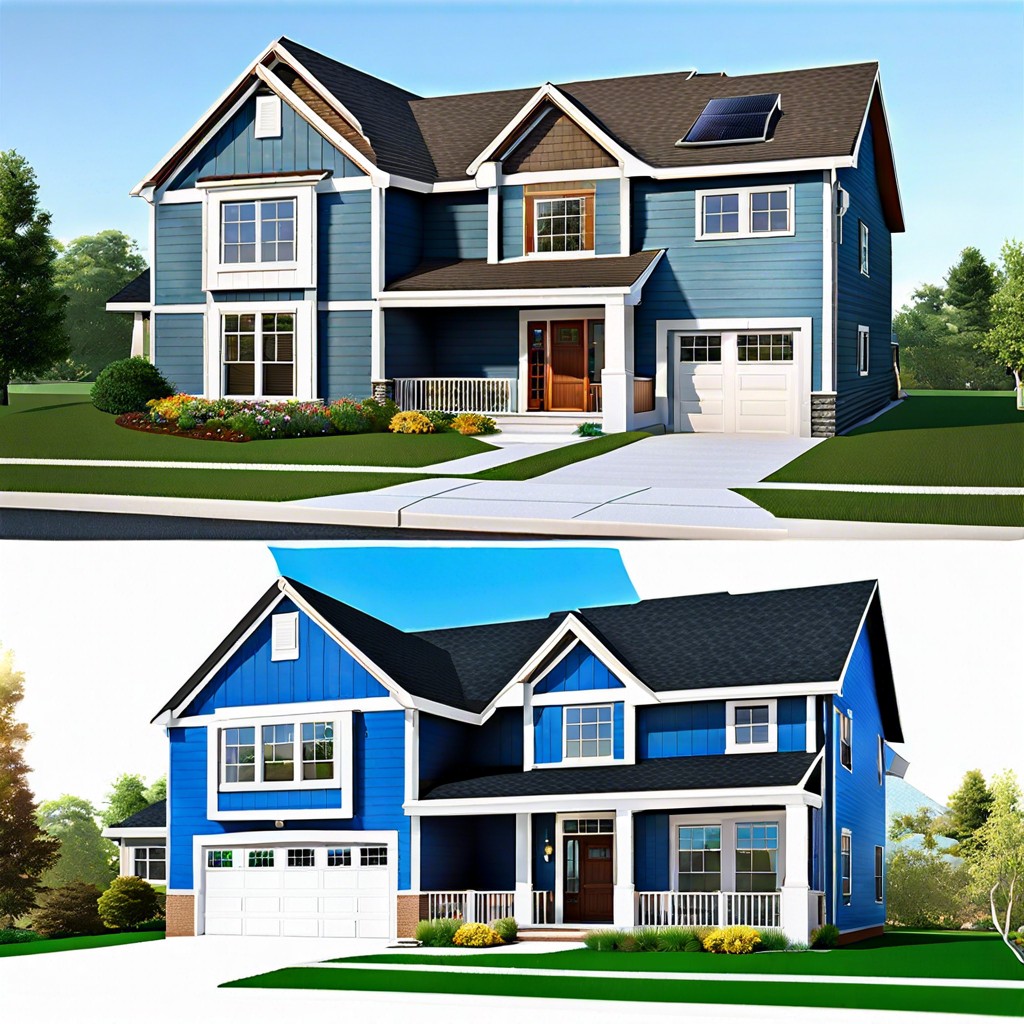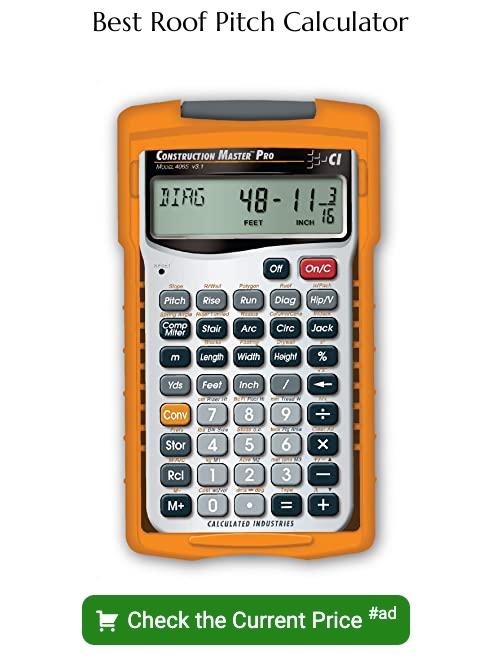Last updated on
Discover how the angle of your roof can affect both the aesthetic appeal and functionality of your home as we shed light on what roof pitch is and why it’s vital for your structure.
Key takeaways:
- Roof pitch is the angle of a roof expressed as a ratio.
- Roof pitch affects materials, water shedding, and aesthetic appeal.
- Roof pitch influences durability, functionality, and attic space.
- Calculate roof pitch by measuring rise over a 12-inch run.
- Standard roof pitch measurements range from 1:12 to 9:12.
Definition of Roof Pitch

Picture a roof in your mind—its steepness is what we’re talking about. This angle is referred to as the roof pitch and it’s expressed as a ratio. This ratio represents the vertical rise over the horizontal run. Simply put, it’s the number of inches the roof rises for every 12 inches it extends horizontally. If you see a pitch labeled as 4:12, that means the roof rises 4 inches for every 12 inches it runs.
Understanding this measurement is critical for several reasons. It influences the materials you’ll select, how well the roof sheds water and snow, and even the aesthetic appeal of your home. It’s as though the roof pitch is the backbone of the roof’s character—dictating functionality, style, and the shelter it provides.
Roof pitches can vary widely, from the nearly flat (which still have a slight slope for drainage) to the dramatically steep, akin to what you’d find on a classic A-frame house in a snowy region. Calculating your own roof’s pitch is a handy skill—you’ll need a level and a tape measure—but more on that later. For now, just remember: roof pitch matters a lot, even if it’s an aspect most of us rarely ponder. It’s essentially the unsung hero of a healthy, happy home.
Importance of Roof Pitch in Construction and Design
The angle of a roof serves as more than aesthetic appeal; it’s critical to a structure’s durability and functionality. In regions prone to heavy snowfall, a steep pitch helps the white stuff slide off before it can cause damage or collapse. Conversely, lower angles suit drier climates, minimizing wind resistance and material costs in the process.
Additionally, the pitch influences the attic space. A higher slope often allows for more headroom, which can be converted into living areas or storage. From an architectural standpoint, the pitch can define the style of a home—think cozy A-frames in alpine settings or sprawling ranch-style houses with gentle slopes.
In essence, you can’t slant the importance of a well-chosen roof pitch; it is elemental in guarding against the elements.
Calculating Roof Pitch
To figure out your roof’s pitch, you’ll need two numbers: the rise and the run. The rise is the vertical distance your roof climbs over a 12-inch horizontal distance, known as the run. Essentially, you’re measuring how much height your roof gains over a foot of horizontal space.
Grab your tape measure, and let’s dive in:
- Safely ascend to the ridge of your roof with a level measuring 12 inches.
- Place the level horizontally from the roof ridge, ensuring it’s perfectly flat.
- Measure straight down from the end of the level to the roof surface. This is the rise.
- Now you’ve got your magic numbers: the rise over a 12-inch run.
- If you’re a whiz with numbers, you can calculate the pitch as a ratio – say 4: 12, which means 4 inches of rise for every 12 inches of run.
Keep in mind, this isn’t high-level calculus. It’s more like baking a cake—mess up the proportions, and you could end up with a dessert disaster. In roofing terms, a miscalculated pitch may lead to leaks or structural issues. So, measure twice, maybe thrice, to keep that integrity intact!
And remember, while this is a straightforward process, it does involve heights. If you’re not comfortable with ladders or your roof has a steep angle, call in a pro. They’ve got the tools and the know-how to accurately gauge your pitch without risking a tumble. Better safe than sorry, right?
Standard Roof Pitch Measurements
Diving headfirst into the nitty-gritty, think of roof pitches as flavors of ice cream – there’s a variety to suit different tastes and functional needs. Typically, the pitch is presented as a ratio of vertical rise to horizontal run, expressed in inches. A roof with a pitch of 4:12 climbs 4 inches for every 12 inches it runs horizontally. Simple, right?
Now, you’ve got your low-slope roofs, often seen on commercial buildings, which sit between 1:12 and 3:12 on the pitch scale. Residential structures usually prefer a steeper climb, boasting pitches of 4:12 to 9:12. These are the “golden middle,” a sweet spot balancing aesthetic appeal with practical moisture management.
For those not afraid of heights – or dramatic slopes – there’s the steep-slope brigade, charging upwards from 9:12 and beyond. These pitches are the mountain peaks of roofs, offering an alpine appeal but requiring a bit more legwork (and caution) for maintenance and installation efforts.
Remember, while standard measurements provide a roadmap, the final pitch selection should take into account regional weather patterns, the house’s architectural style, and how much you fancy climbing a ladder for those rooftop chores!
Minimum Roof Pitch for Effective Snow Shedding
If you’ve ever seen a heavy blanket of snow on a house, you know that its roof has a weighty job. The pitch is what gives it a fighting chance to toss off those icy duvets before they become a problem. Typically, a steeper angle will shake off snow like a dog sheds water after a bath.
Consider this: A pitch of 1/4:12 is nearly flat, and that’s asking for trouble in snow country. So, what’s the magic number? Generally, we eyeball a 2:12 ratio as the bare minimum for residential homes to prevent buildup. But, in regions where the snowfall is more like a winter-long pillow fight, you’ll want to arm your roof with at least a 4:12 slope; it’s the sweet spot for sending snow sliding earthward before it can overstaying its welcome.
Of course, the steeper it is, the less snow will lounge around up there, meaning a steep 6:12 or even more aggressive ratios play snow bouncer more effectively. While we are not talking about alpine ski slopes, these angles mean serious business when it comes to keeping your home cozy and dry underneath its snowy hat.





